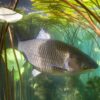Animal monitoring has entered a new era, with RFID leg bands for birds revolutionizing how researchers track wildlife and manage livestock. These small, lightweight devices are offering scientists and conservationists accurate, non-invasive ways to gather crucial data on animal behavior, movement, and health. In this article, we’ll dive into how RFID leg band technology works and its transformative potential for the future of animal monitoring.
How RFID Leg Band Technology Works
RFID leg bands for birds are small devices that store unique identification data. These bands work by emitting radio frequency signals when a bird fitted with the band comes close to an RFID reader. This reader captures the signal and logs data such as the bird’s location and activity. Unlike GPS systems, RFID leg bands for birds are passive, meaning they don’t require a battery, allowing them to last for the bird’s entire life.
Researchers commonly use RFID leg bands for birds to track species over long periods without disturbing their natural behavior. The birds are tagged, and RFID readers are placed strategically in their habitats—at nest boxes, feeders, or water sources. Each time a tagged bird enters the reader’s range, its activity is recorded, providing rich data on movements, survival rates, and breeding patterns.
Applications in Wildlife Research
One of the most effective uses of RFID leg bands for birds is in the study of migration and feeding behaviors. In ongoing projects, such as those tracking Painted Buntings and Black Rosy-Finches, researchers place RFID readers at feeding stations. These feeders log each visit, recording valuable information about the birds’ migration timelines, feeding frequency, and social interactions.
By utilizing RFID leg bands for birds, researchers gain precise insights into population dynamics, breeding success, and species survival. These insights are critical for crafting effective conservation strategies, particularly for endangered or migratory species. In contrast to older tracking methods that required frequent recapturing, RFID leg bands for birds allow for hands-off monitoring over extended periods.
Benefits of RFID Leg Band Technology
The technology behind RFID leg bands for birds offers several advantages over traditional tracking methods:
- Non-Invasive Monitoring: RFID leg bands for birds are small and lightweight, allowing long-term tracking without disrupting the birds’ behavior. This makes them ideal for sensitive or endangered species.
- Precise Data Collection: Each band stores a unique identification code, enabling accurate tracking of individual birds over time. This precision helps researchers follow specific animals and understand their life cycles more effectively.
- Cost-Effective: Passive RFID leg bands for birds don’t require batteries, which makes them significantly cheaper than GPS collars. Additionally, once deployed, they provide continuous data for years with little maintenance.
- Durable and Long-Lasting: Since RFID leg bands for birds have no moving parts and require no power source, they are durable enough to last for the lifetime of most animals, providing reliable long-term data collection.
Challenges and Limitations
Despite the many advantages of RFID leg band technology, there are challenges that researchers face. The primary limitation is the read range. RFID leg bands for birds generally need to be within a few centimeters of an RFID reader to transmit data. This requires researchers to position RFID readers at locations that birds frequently visit, such as feeders or nest boxes.
Additionally, environmental factors such as metal objects or water can interfere with radio frequency signals, making it difficult to capture accurate data in certain habitats. Researchers must carefully plan the placement of RFID readers to avoid such interferences.
The Future of Animal Monitoring with RFID Leg Bands for Birds
As technology continues to evolve, RFID leg bands for birds will play an increasingly important role in wildlife monitoring and conservation efforts. Here’s what the future holds:
- Improved Read Range: One major area of development is enhancing the range of RFID readers. As technology advances, researchers expect RFID leg bands for birds to transmit data over longer distances, allowing more flexibility in study design and reducing the need for placing readers in dense networks.
- Integration with IoT and AI: RFID leg bands for birds are expected to integrate with the Internet of Things (IoT), allowing real-time data to be captured and analyzed instantly. This will streamline wildlife monitoring, enabling immediate interventions when a bird is in distress or its behavior deviates from the norm. Artificial intelligence can further analyze these vast datasets, identifying patterns that human observation might miss.
- Application to More Species: As RFID leg bands continue to become smaller and more efficient, researchers will be able to use them on even smaller species, such as insects or amphibians. This will open up new possibilities for studying entire ecosystems and understanding how different species interact and respond to environmental changes.
- Enhanced Conservation Strategies: As more species are monitored using RFID leg bands for birds, conservationists will have access to more detailed data on species’ behaviors and needs. This will allow for more targeted, effective conservation efforts, ensuring that vulnerable species are protected before their populations decline further.
Conclusion
RFID leg bands for birds are transforming how we monitor wildlife and manage livestock. With their non-invasive design, cost-effectiveness, and ability to provide accurate, long-term data, RFID leg bands are essential tools in the field of animal research. As the technology behind RFID leg bands continues to evolve, it will play an even more significant role in understanding the behaviors and movements of animals, leading to more informed conservation efforts and better ecosystem management.
The future of animal monitoring is bright, and RFID leg bands for birds are at the forefront of this revolution. As researchers and conservationists embrace this technology, we are likely to see major breakthroughs in how we study and protect wildlife.










Add comment